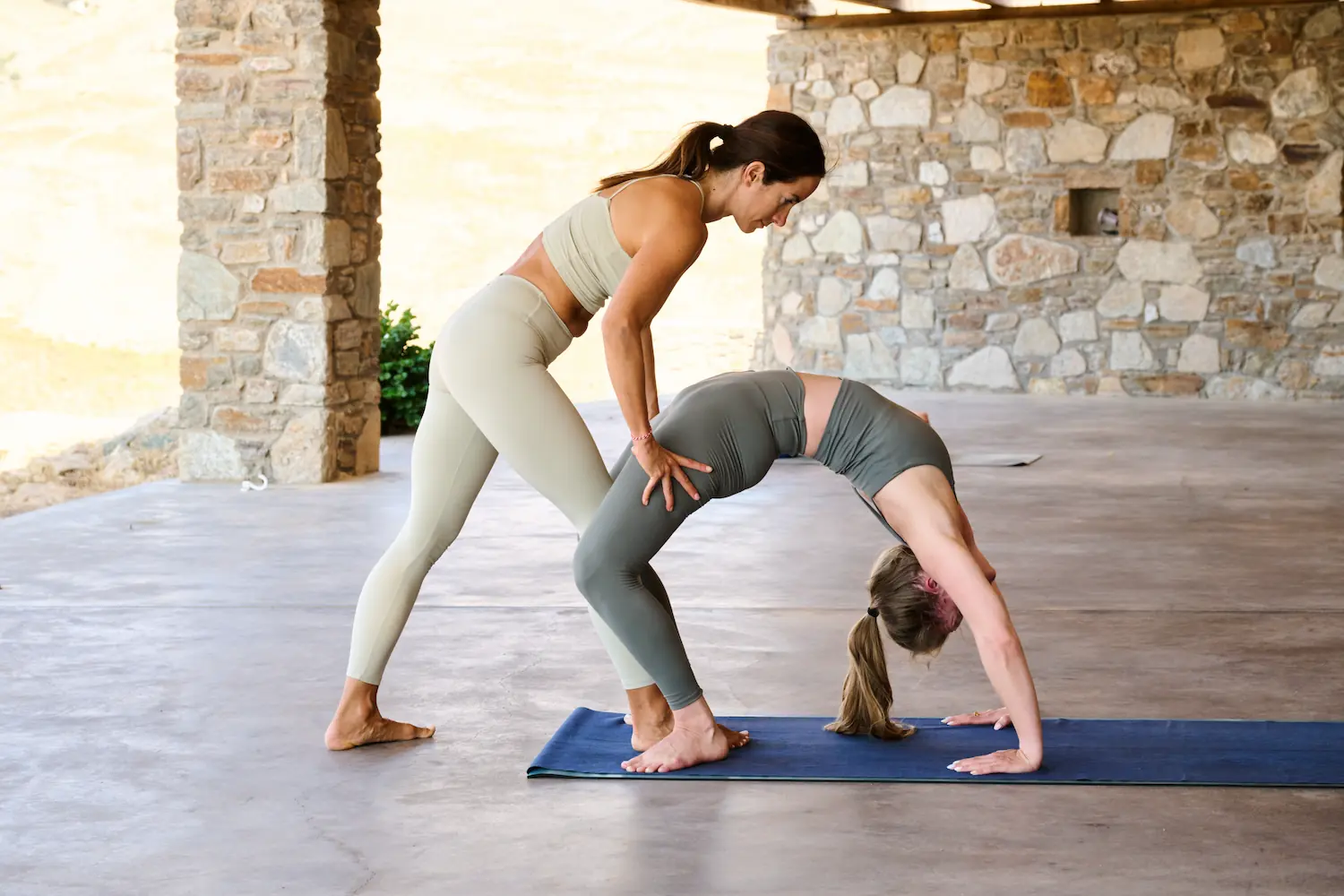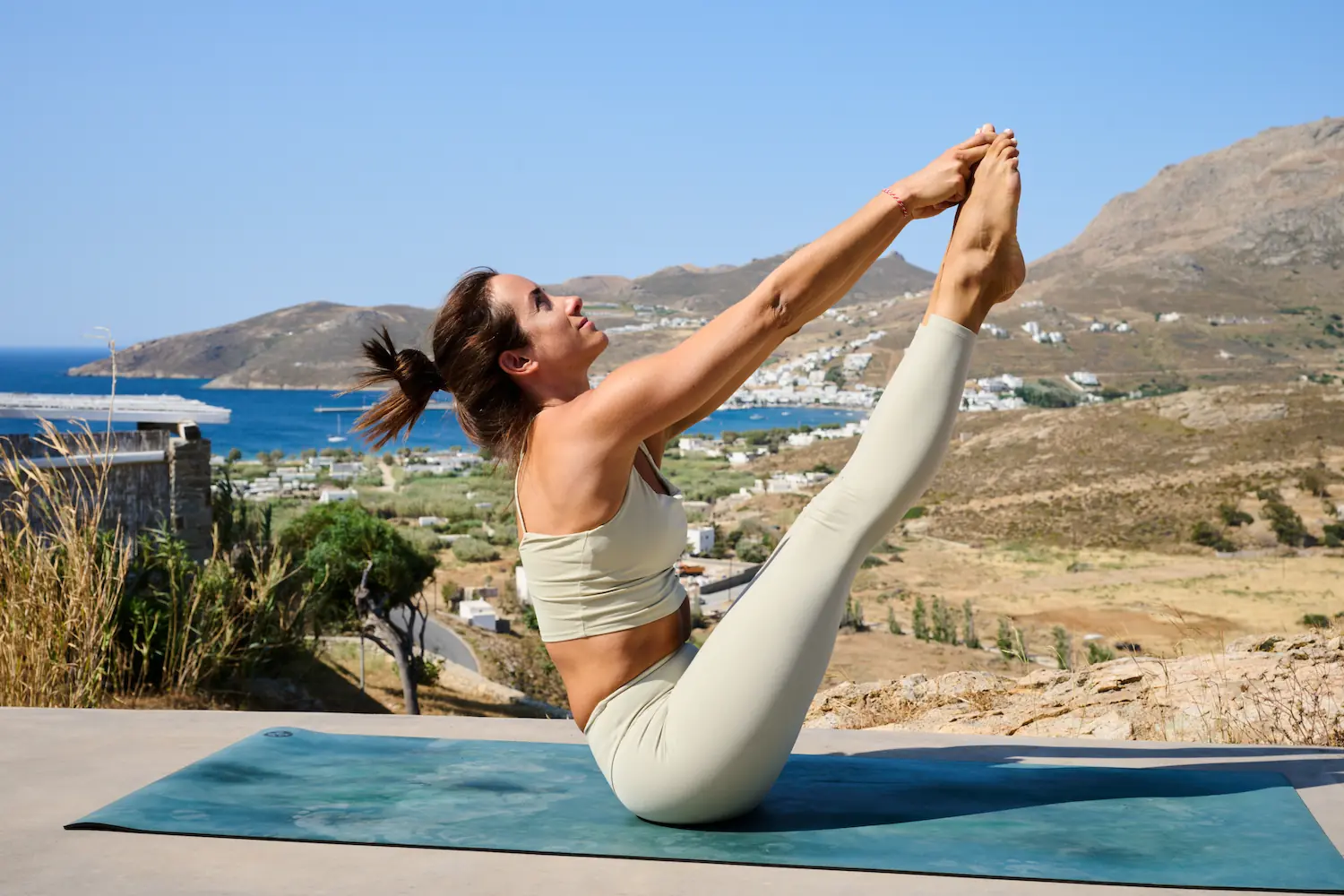When new students join an Ashtanga class or enter a Mysore room for the first time, they are often taken by surprise. The way Ashtanga is being taught is in many ways different from any other style of Yoga. And there are reasons for this.
Before we dive deeper into them, let’s keep in mind that these characteristics only apply to “traditional” Ashtanga Yoga, when taught and practiced as in Mysore, India, its birthplace.
It doesn’t mean that all classes around the world that are labeled “Ashtanga” follow these guidelines. Often enough teachers change things to make the classes more popular. These characteristics can then also serve as indicators on how authentic or traditional a teacher and their class/Shala is.
Why Mysore style?
In Ashtanga Yoga we usually practice 5 or 6 days per week and most days are “Mysore style” (completed ideally by one Led class per week). This term - coming from the city Mysore in South India where Ashtanga Yoga was first practiced in the last century - means individualised teaching in a group setting. The teacher basically works 1 on 1 with every student. It is almost like a private class but with several people in the room. Every student practices the part of the sequence that they know, in autonomy and guided by the pace of their own breath. They are completely independent from the other students in the room.
The teacher is there to make sure they move and breathe correctly, performs physical adjustments whenever needed, teaches new asanas and offers personalised feedback to help the students reach further and expand their potential.
The reason for this is that we aim for Ashtanga to be a self-practice. In time, we want to be independent and able to practice alone, at home, without a teacher. Although the presence of the teacher the first few months or years is essential, gradually we need to learn to navigate through the practice alone. This is extremely liberating.
Our yoga practice then becomes part of our life, not just a service that we buy from this or another yoga studio. It becomes not just another activity that we do, a pastime or a hobby but a spiritual practice, a “sadhana”.
This is the way Yoga was being taught in India back in the days. 1 on 1, catered to the needs of the student, and in close relationship with the teacher. The impersonal group classes that most of us are acquainted with are a result of the vast popularisation of Yoga in the West - an easier and much more lucrative way to make money out of teaching Yoga.
Why a fixed sequence?
This goes hand in hand with the previous point.
Ashtanga yoga comprises 6 fixed series. Each series, once mastered leads to the next one and this happens also with each asana in each series. We learn gradually and in our own rhythm. The teacher only moves the student when they consider that they have learned to a sufficient degree the portion of the series that they practice already. And in order for the mind to memorise and the body to develop muscle memory the sequence needs to be fixed. Then the students know what to expect, can manage their energy better and can slowly begin to “own” their practice.
The sequence is a blueprint, guiding the student through a series of postures that makes sense not just anatomically but also energetically. And then, with time, the student gets a chance to understand why.
As opposed to most classes out there where the teacher decides what to teach each day and the students just watch and try to follow, Ashtanga Yoga gives the protagonist role but also the responsibility to the student, teaching them from early on how to build a self-practice that they can take anywhere and that will be with them for the rest of their lives.
Why is there no music?
Ashtanga Yoga is maybe the only style of modern physical Yoga that is practiced without music. Often times new students coming from other styles find themselves surprised by the silence. It can even make them feel uncomfortable.
The reason we don’t play music in Ashtanga has to do with the intention behind this practice. It is supposed to be a “meditation in movement”, a deep exercise in concentration and turning the attention and focus inwards. What’s important is not what’s happening in the background but inside each and every student. In this context music is yet another distraction, one of the many we need to eliminate in order to tune into what really matters.
At the beginning it can be tough. When there is no external entertainment, the noise inside our head can be deafening.
But if we stick to it, with time, silence will prevail and the practice will become an internal dialogue with ourselves, a meditation, a safe space where none of the world’s nuisances can reach us.
And this is one of the most valuable lessons of Ashtanga Yoga.
Why no props?
Yoga blocks, straps, bolsters etc do not really have a place in a traditional Ashtanga class. The reason - once again - has to do with the intention behind practicing. We saw earlier that the true essence of this practice is a meditation in movement, a constant flow alternating static and dynamic parts, guided by the breath and an uninterrupted, one-pointed concentration. The use of props is both an interruption and an interference. It requires the student to focus on something external to help them achieve the pose. Therefore the harmony and simplicity of working solely with one’s body and breath is disrupted.
This rule is not without exception though. Let’s not forget that the yoga mats we all use could be considered a prop (back in the days in India they were not being used). Also, the rug and towel most Ashtanga practitioners use to avoid their sweat dripping on the floor and the mat could also be considered a prop. It is still allowed though for hygienic reasons.
Let’s say that we aim for a practice as minimalistic as possible, with the least interruptions and interferences. Even the teacher’s adjustments should be done in a wise, subtle, non intrusive way.
Read more about adjustments in Ashtanga.
Epilogue: Why all these rules?
This is maybe the biggest of all Whys and the reason Ashtanga is not so popular compared to other styles. It is considered rigid and strict. But is it really so?
The real reason behind all the rules (for example: synchronisation of breath and movement, fixed sequences, specific gaze points, not skipping poses etc) is to provide a cure for our restless mind. The more internal things we give our mind to focus on, the less it will have the tendency to wander.
According to the second of the Yoga Sutras of Patanjali, “Yoga is the cessation of the mind’s fluctuations”. So all the rules, the discipline, the lack of freedom to choose what you want to practice every day are there to train the mind to think less and focus on the here and now.
Rules are not here to punish or limit the students but rather to give them more freedom in the long run, by making them mindful, teaching them unhindered awareness, acceptance, equanimity.
Rules - just like the set sequence - are just a blueprint. The more one matures in the practice the less they are needed. And this is when creativity starts, even in a seemingly rigid style like Ashtanga. But until then, they offer the necessary guidance and structure one needs to grow and evolve, solidify knowledge, gain confidence, change the way their mind works and break through old patterns.





